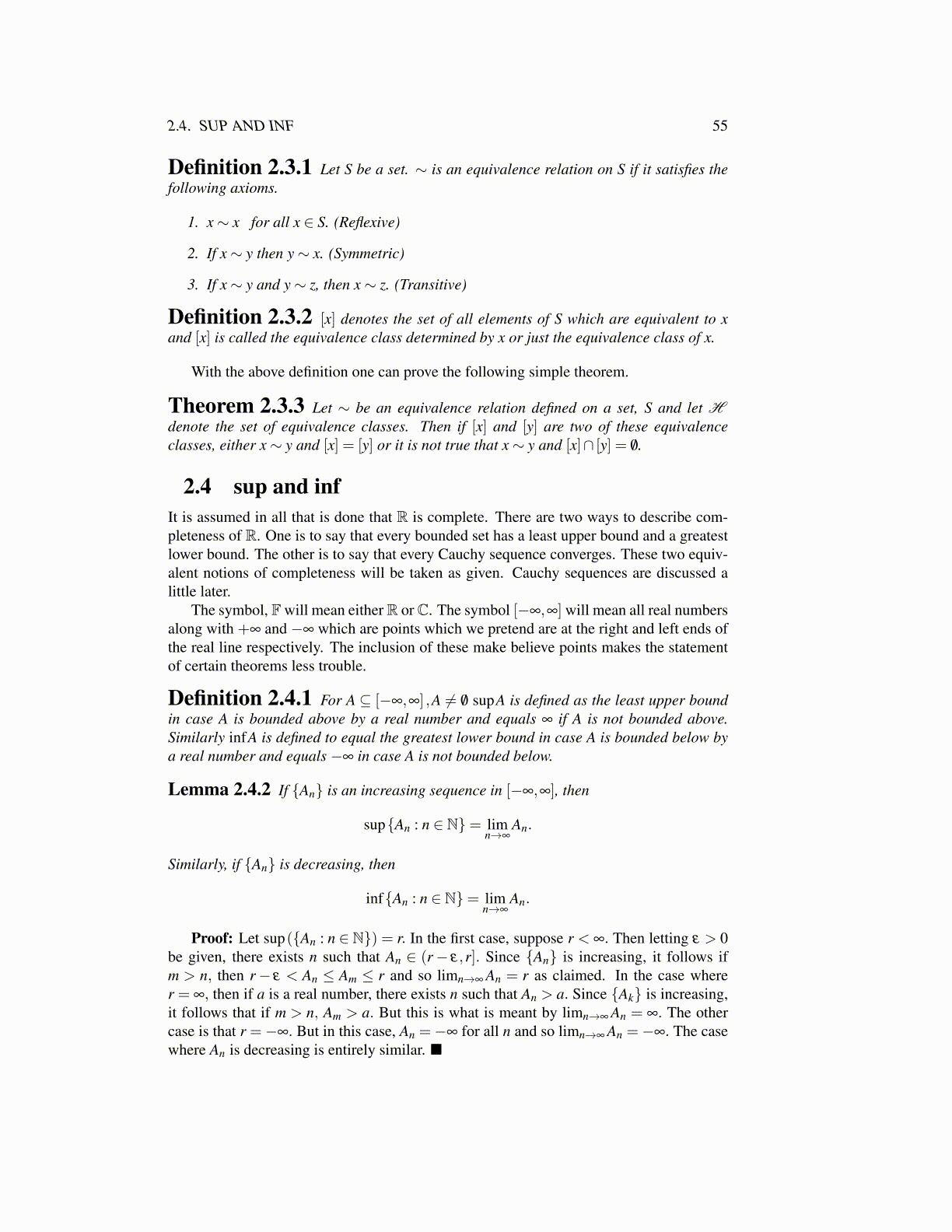
2.4. SUP AND INF 55
Definition 2.3.1 Let S be a set. ∼ is an equivalence relation on S if it satisfies thefollowing axioms.
1. x∼ x for all x ∈ S. (Reflexive)
2. If x∼ y then y∼ x. (Symmetric)
3. If x∼ y and y∼ z, then x∼ z. (Transitive)
Definition 2.3.2 [x] denotes the set of all elements of S which are equivalent to xand [x] is called the equivalence class determined by x or just the equivalence class of x.
With the above definition one can prove the following simple theorem.
Theorem 2.3.3 Let ∼ be an equivalence relation defined on a set, S and let Hdenote the set of equivalence classes. Then if [x] and [y] are two of these equivalenceclasses, either x∼ y and [x] = [y] or it is not true that x∼ y and [x]∩ [y] = /0.
2.4 sup and infIt is assumed in all that is done that R is complete. There are two ways to describe com-pleteness of R. One is to say that every bounded set has a least upper bound and a greatestlower bound. The other is to say that every Cauchy sequence converges. These two equiv-alent notions of completeness will be taken as given. Cauchy sequences are discussed alittle later.
The symbol, Fwill mean eitherR orC. The symbol [−∞,∞] will mean all real numbersalong with +∞ and −∞ which are points which we pretend are at the right and left ends ofthe real line respectively. The inclusion of these make believe points makes the statementof certain theorems less trouble.
Definition 2.4.1 For A ⊆ [−∞,∞] ,A ̸= /0 supA is defined as the least upper boundin case A is bounded above by a real number and equals ∞ if A is not bounded above.Similarly infA is defined to equal the greatest lower bound in case A is bounded below bya real number and equals −∞ in case A is not bounded below.
Lemma 2.4.2 If {An} is an increasing sequence in [−∞,∞], then
sup{An : n ∈ N}= limn→∞
An.
Similarly, if {An} is decreasing, then
inf{An : n ∈ N}= limn→∞
An.
Proof: Let sup({An : n ∈ N}) = r. In the first case, suppose r < ∞. Then letting ε > 0be given, there exists n such that An ∈ (r− ε,r]. Since {An} is increasing, it follows ifm > n, then r− ε < An ≤ Am ≤ r and so limn→∞ An = r as claimed. In the case wherer = ∞, then if a is a real number, there exists n such that An > a. Since {Ak} is increasing,it follows that if m > n, Am > a. But this is what is meant by limn→∞ An = ∞. The othercase is that r =−∞. But in this case, An =−∞ for all n and so limn→∞ An =−∞. The casewhere An is decreasing is entirely similar. ■